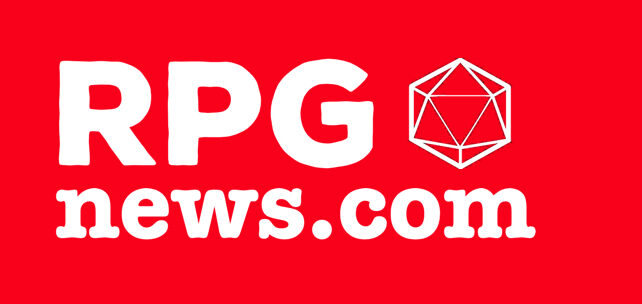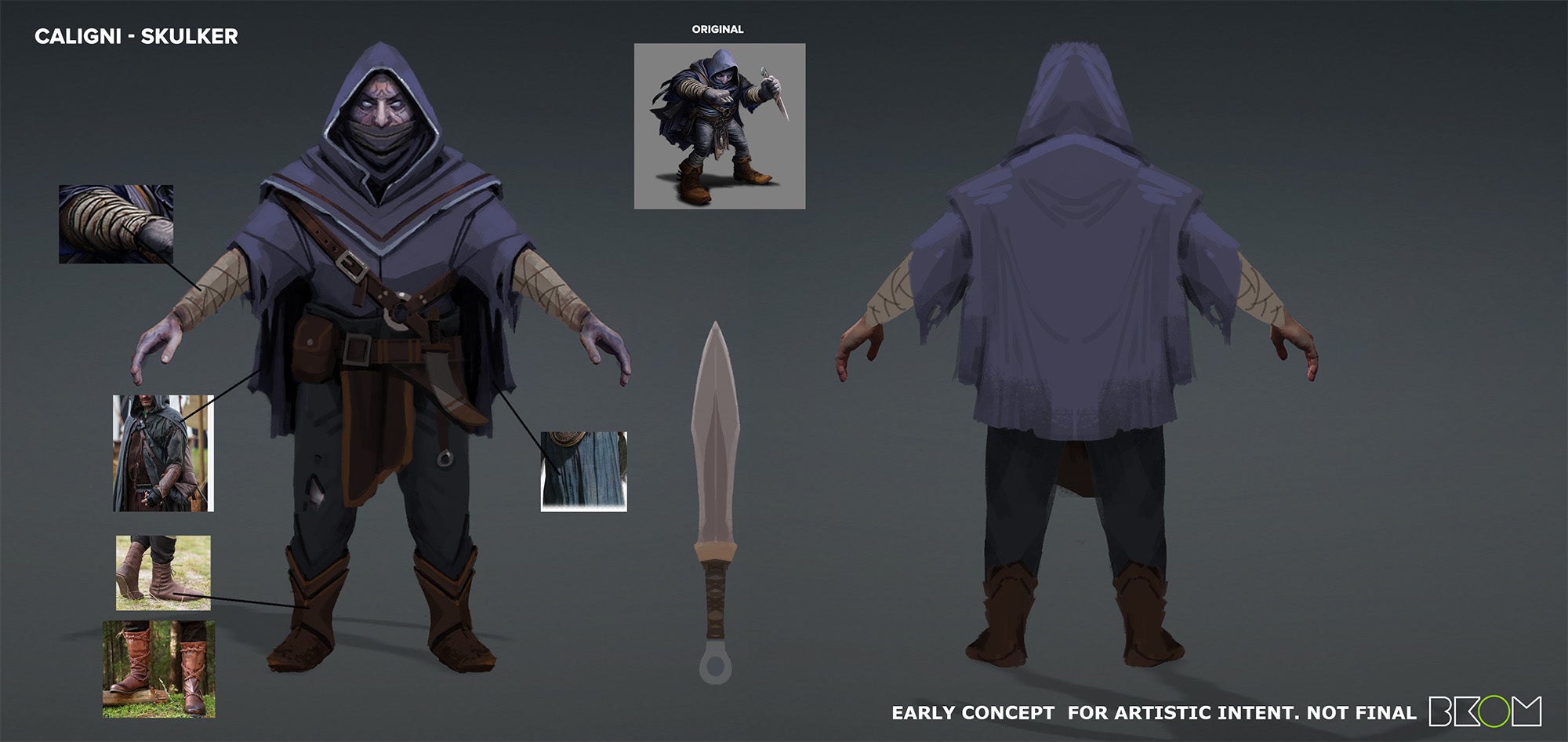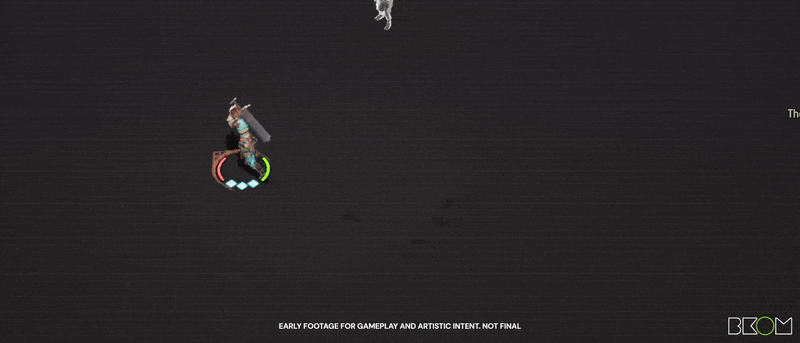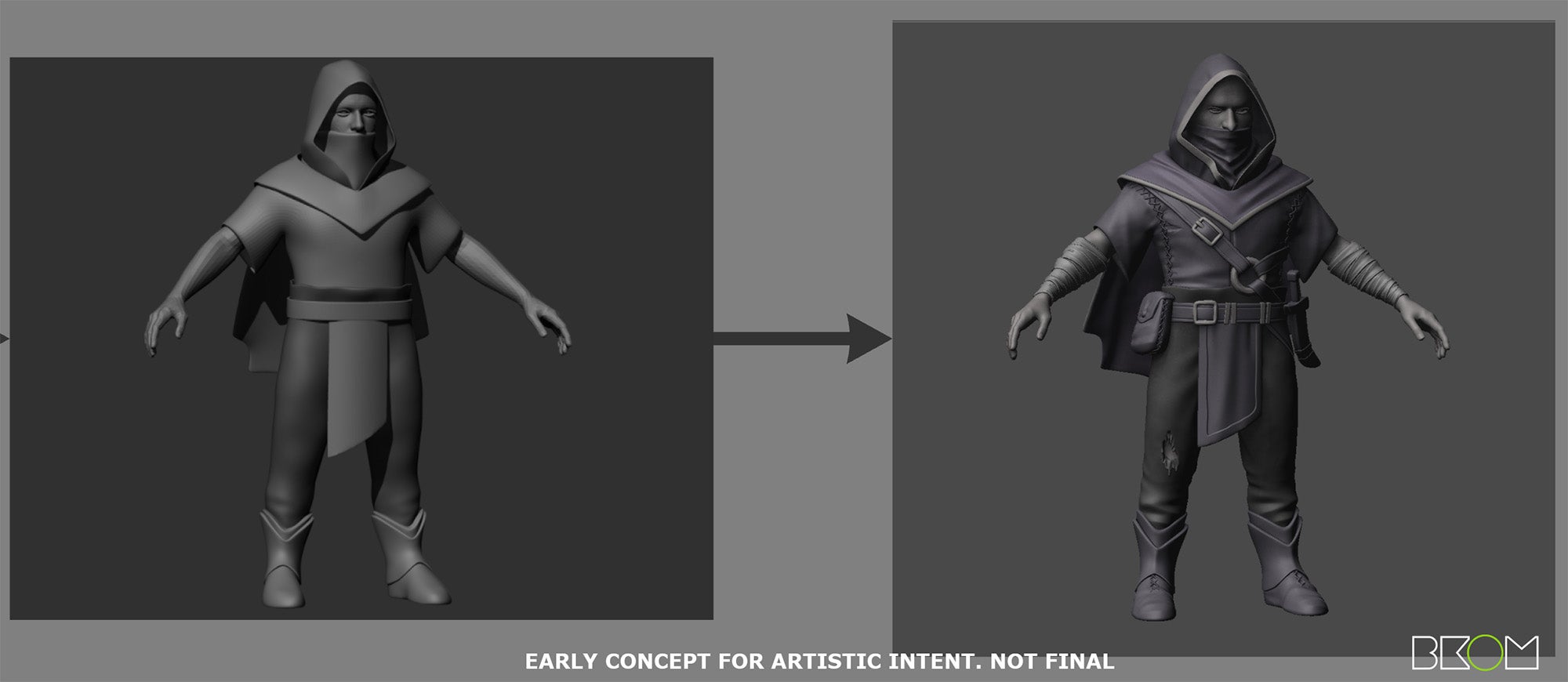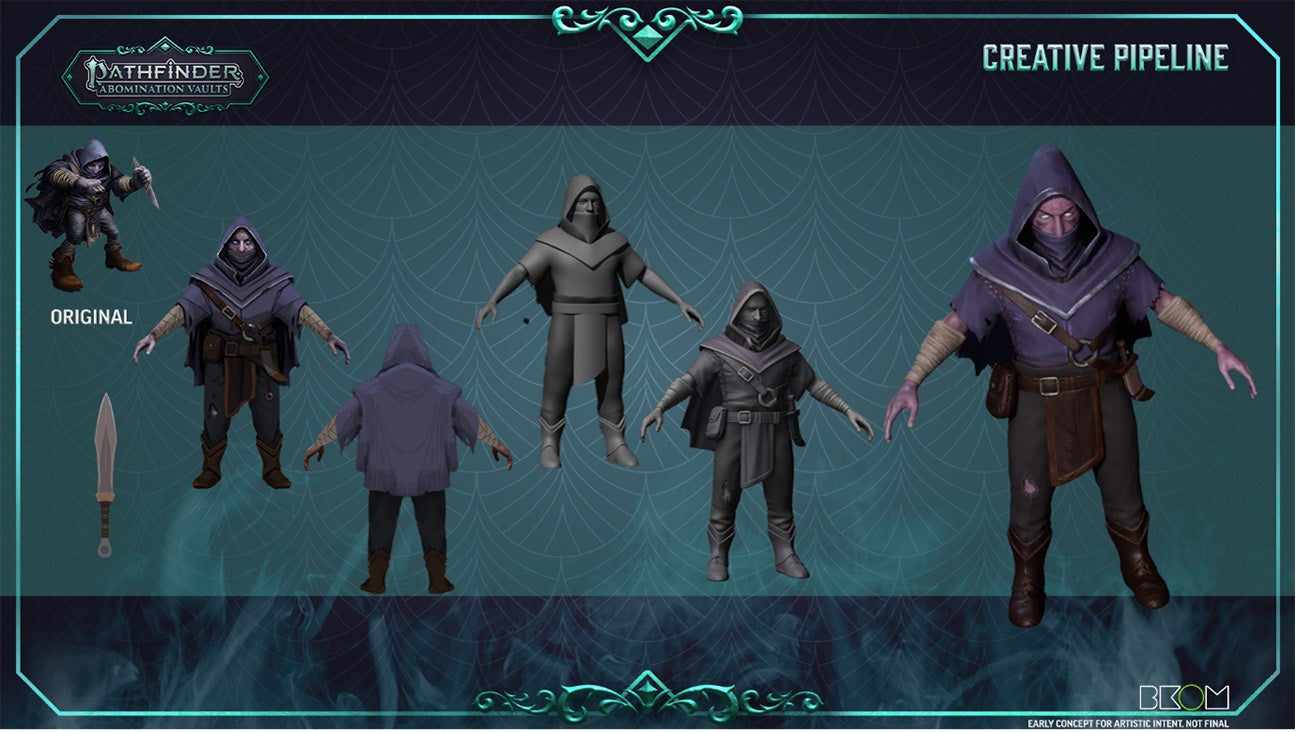Hail, Pathfinders!
Today we’re catching up with our friends at BKOM Studios while they develop a Hack and Slash adaptation of Pathfinder: Abomination Vaults. Talking to their Creative Director Wyatt and Art Director Jonathan, we learned more about what it takes to translate a game from tabletop to video game. And in this case, it was all through the lens of strange and mysterious inhabitants of the Darklands: caligni.Immersion and Understanding
To bring caligni over to their game, BKOM started with a clear understanding of their identity. Where better to start than the caligni’s tragic history?
Once people of the mighty Azlanti empire who reigned over Golarion, they fled underground millennia ago to survive the cataclysmic Earthfall.
In desperation, they made a pact with malevolent demigods known as the Forsaken, who transformed them into resilient and merciless subterranean dwellers capable of surviving the Darklands.
As part of the deal, when a caligni dies, they combust in a burst of light and flame, with their soul energy feeding the Forsaken… a cruel irony, as the Forsaken vanished long ago and no longer watch over them, meaning their souls feed no one!
Caligni combatants are split into distinct societal and battlefield roles, such as stalkers, callers, and vanguards, and many other roles.
The last piece of the caligni puzzle is the owbs, strange ancient beings from the Netherworld who caligni have come to worship and obey. These powerful creatures guide and manipulate caligni to do their bidding. Whether the owbs are manifestations of the ancient Forsaken, or simply imposters, is shrouded in mystery.
Building out Battlefield Roles
With a clear definition of who caligni are, BKOM could start designing their game mechanics. Rather than being regular combatants, they wanted each caligni unit to be cohesive but unusual, challenging players in new ways:
- Skulkers: The prototypical members of caligni forces. They fight like rogues, zip in and out of combat, and whittle away at the heroes. Players will need agility, precision, and teamwork to corner the skulkers and take them out efficiently.
- Vanguard: These are designed to be slow, powerful juggernauts who shake the battlefield with their heavy greatsword strikes. Their presence forces heroes to maneuver around the battlefield to avoid devastating blows.
- Callers: The “support types” of the caligni forces: deadly glass-cannon priests who cripple the heroes with dark magics borrowed from their owb masters, while empowering their caligni allies to greater heights of ferocity.
- Owbs: Powerful elite ranged enemies who use their shadowy “Curse of Darkness” to obliterate heroes from afar. Owbs will reposition when approached, hiding behind caligni servants. When an owb is on the battlefield, the heroes must pay attention to its attacks or be wiped out by its shadow magic instantly.
BKOM noted that these designs will evolve throughout implementation and testing, so we look forward seeing the final versions on the battlefield!
An Explosive Finale
One of the most defining aspects of caligni is how they die. Thanks to a nasty pact made ages ago, when a caligni falls, they explode in a burst of flame and light.
This aspect was key for translating over into the gameplay. When a caligni is defeated, a small AoE preview is displayed that heroes must escape (usually with a dodge) to avoid suffering a burst of damage and crowd control.
But after playtesting, BKOM quickly saw how easy it is to go overboard with the death blasts! They were constantly stunning, killing, de-buffing, and displacing the heroes. This is especially a problem when swarmed by caligni in the cramped corridors of the Darklands.
However, this element was too central to their identity to simply abandon. Instead, the designers carefully dialed down the severity of the death blasts until they provided the right balance of punishment and player agency. Now, taking out a caligni still means being ready to roll out, but won’t lead to being pinballed around into five different explosions while your HP bar empties out.
Ultimately, the “combined arms” dynamic and unusual mechanics of caligni are intended to force a new and unique challenge for heroes arriving in the Darklands. Their unusual fighting style should push Pathfinders to try new strategies and master calignis’ strengths and weaknesses.
Art Vision and Pipeline
Switching to the visual representation, Art Director Jonathan Dufresne described the process of bringing caligni to life.
Getting the visual design right always starts by looking at the source material. References and inspiration come directly from the books and other Paizo artwork.
At the current stage of production, BKOM’s art pipeline is well defined. It starts with reference gathering, then moves to a front-and-back-view sketch. A balance is struck between retaining key elements of the original design while adapting them to the game’s vision.
During review, proportions are checked, making sure they’re exaggerated enough to read well from a top-down perspective. Each enemy and character must feel unique in their silhouette for quick recognition by the player. Small details are also minimized to keep the visuals easy to read. Throughout the process, the Art team consults Game Design to ensure the enemy visually matches in-game behavior.
The next stage is 3D blocking. The goal here is to validate proportions directly in-game with proper camera angles. As always, reading well in the context of the game is a priority before moving to polish. Animation can also get started using the 3D blocking, before we even get the final models.
The last step is the detailed, textured enemy to bring everything together. While there’s room for feedback and minor changes, most of it has already been approved and implemented in previous steps.
Caligni Skulker Design
Applying this process to an example like the caligni skulker shows the method in practice. Taking the original references to inform the concept art, the team matches the original intent closely. Changes mostly take the form of adjustments to the proportions to suit the game’s other enemies and overall art direction.
Weapons are often deliberately oversized. Even though the original design has a dagger, BKOM’s 3D model is larger to make it easier to see during gameplay.
Animation and VFX focused on making the skulker feel nimble and evasive, using effects like the smoke grenade. By this stage, all the pieces come together and bring the character to life.
Thanks for checking out Wyatt and Jonathan’s breakdown of their approach to translating caligni from the TTRPG to their game. If you’d like to follow BKOM’s progress with Pathfinder: Abomination Vaults, be sure to join their official Discord server and follow them on social media!
Discord | Twitter | Facebook | Newsletter | Wishlist
Read more at this site
